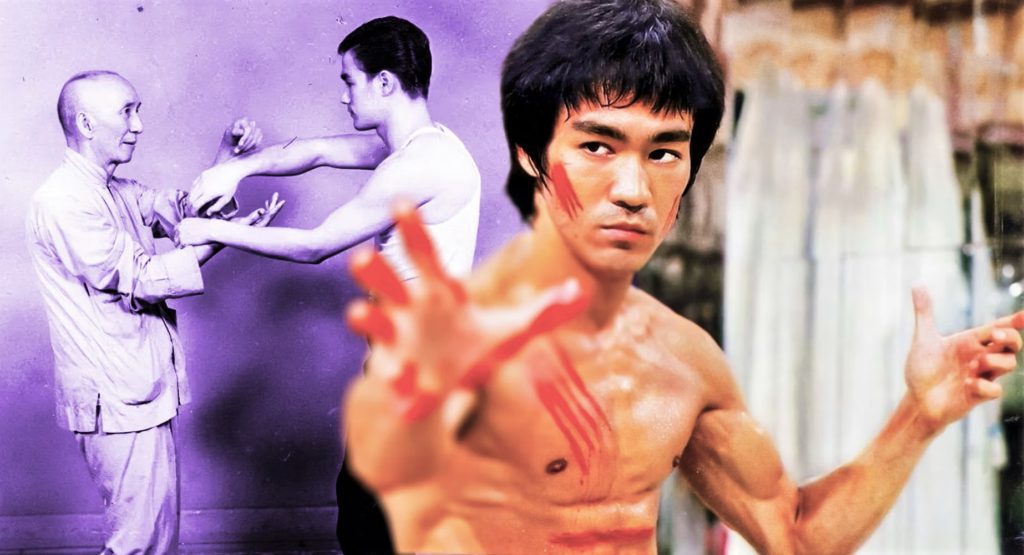
In the 1950s, Hong Kong cinema started gaining global attention with the rise of kung fu movies. These films often featured martial arts legends and brought attention to Chinese martial arts, including Wing Chun. This popularization of martial arts might have influenced Bruce Lee’s interest and passion for the art.
Bruce Lee faced some racial discrimination in Hong Kong due to his mixed ethnicity. These experiences might have shaped his views on identity and influenced his decision to pursue opportunities in the United States.
Hong Kong’s multicultural environment provided opportunities for the exchange of ideas and knowledge. Bruce Lee’s exposure to different martial arts styles and cultures in the region might have contributed to the development of his own martial arts philosophy, Jeet Kune Do.
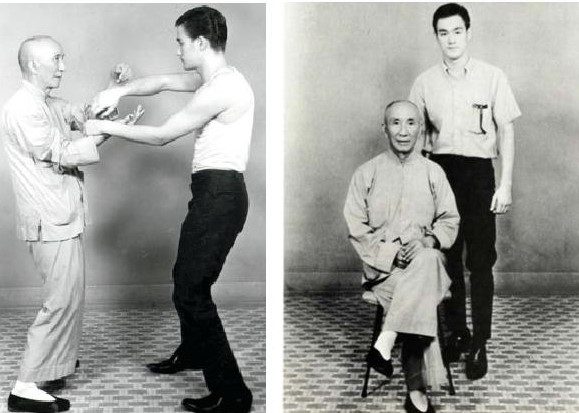
How Did Bruce Lee Meet Ip Man?
Bruce Lee’s introduction to Ip Man, the revered Wing Chun grandmaster, occurred when he was a 13-year-old in Hong Kong. Bruce’s father, Lee Hoi-chuen, concerned about his son’s street fighting reputation, decided it was time for him to learn martial arts properly. Through his father’s efforts, Bruce met Ip Man in 1953, showcasing his passion and determination to learn kung fu. Impressed by Bruce’s potential, Ip Man took him on as a student and focused on teaching him the fundamentals of Wing Chun. Under Ip Man’s guidance, Bruce Lee’s formal martial arts training began, and his skills flourished. Despite Bruce’s fame, Ip Man treated him like any other student, fostering a strong student-master relationship over time. The principles of Wing Chun became a crucial part of Lee’s martial arts philosophy, leading him to create his own style, Jeet Kune Do. This meeting with Ip Man shaped Bruce Lee’s martial arts career and propelled him to become a legendary martial artist and cultural icon.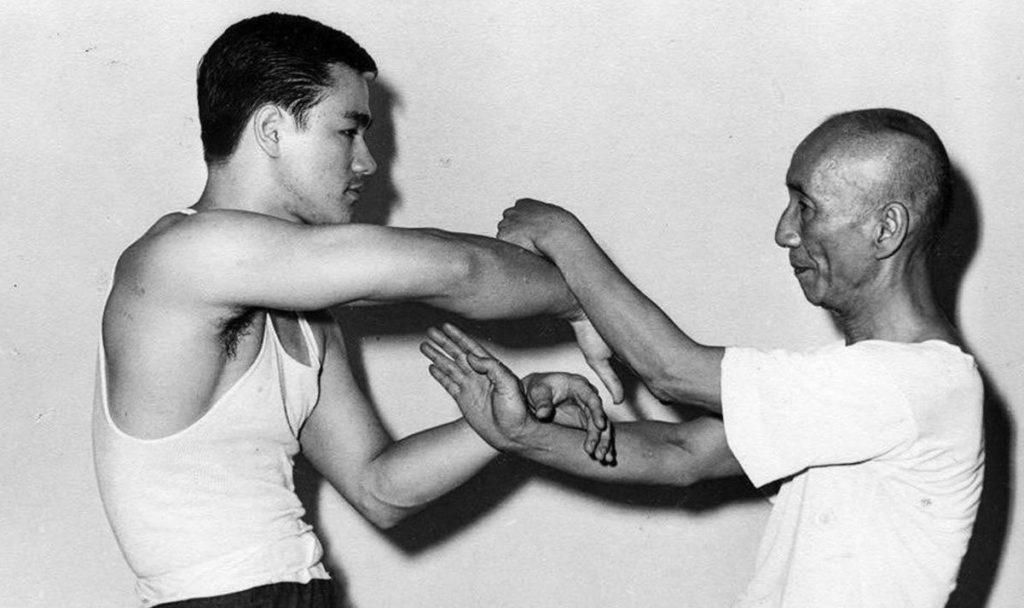
During Bruce Lee’s early Wing Chun days with Ip Man, he was influenced not only by the grandmaster but also by his close friend and fellow student, William Cheung. At first, Cheung didn’t take Bruce’s interest in kung fu seriously but soon recognized his friend’s genuine commitment. Their friendship deepened, and outside of class, Cheung played a vital role in Lee’s training and support. After Bruce was dismissed from Ip Man’s school, he continued training with William Cheung, exploring the full potential of Wing Chun. Cheung introduced Bruce to lesser-known footwork and applications, making their training sessions experimental and encouraging Bruce to question and discover aspects of the martial art on his own. This close bond and training experiences with Cheung laid the groundwork for Bruce Lee’s later development of Jeet Kune Do, leaving an indelible mark on his legacy as a martial arts icon until his untimely death in 1973.
RELATED:
Top 10 Greatest Bruce Lee Fight Scenes of All Time
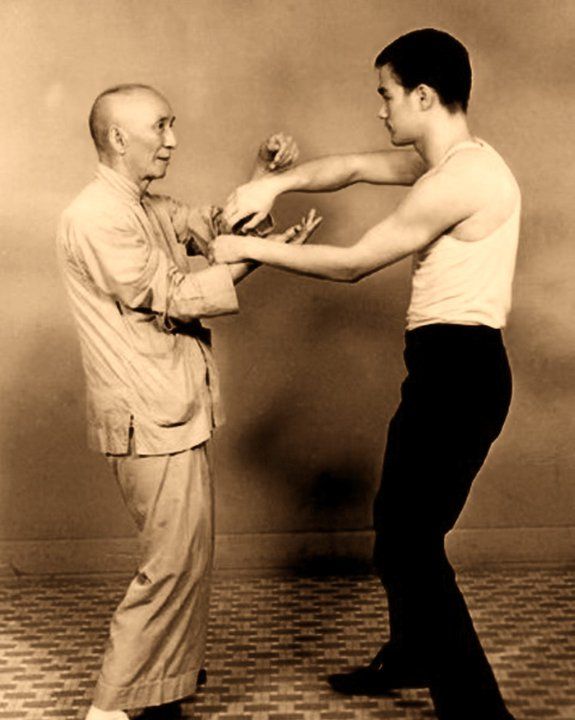
When Bruce Lee Meet Ip Man
When Bruce Lee met Ip Man, the renowned Wing Chun grandmaster, during his teenage years in Hong Kong, it was a turning point in his life. Known for his street fighting abilities, Bruce’s father, Lee Hoi-chuen, sought out Ip Man’s guidance to teach his son proper martial arts and instill discipline. In 1953, at the age of 13, Bruce was introduced to Ip Man, who was impressed by his passion and determination to learn kung fu. Ip Man treated Bruce like any other student, focusing on teaching him the fundamentals of Wing Chun, which became the foundation of his martial arts journey. Under Ip Man’s mentorship, Bruce Lee’s martial arts skills flourished, and he credited his master with shaping his philosophy.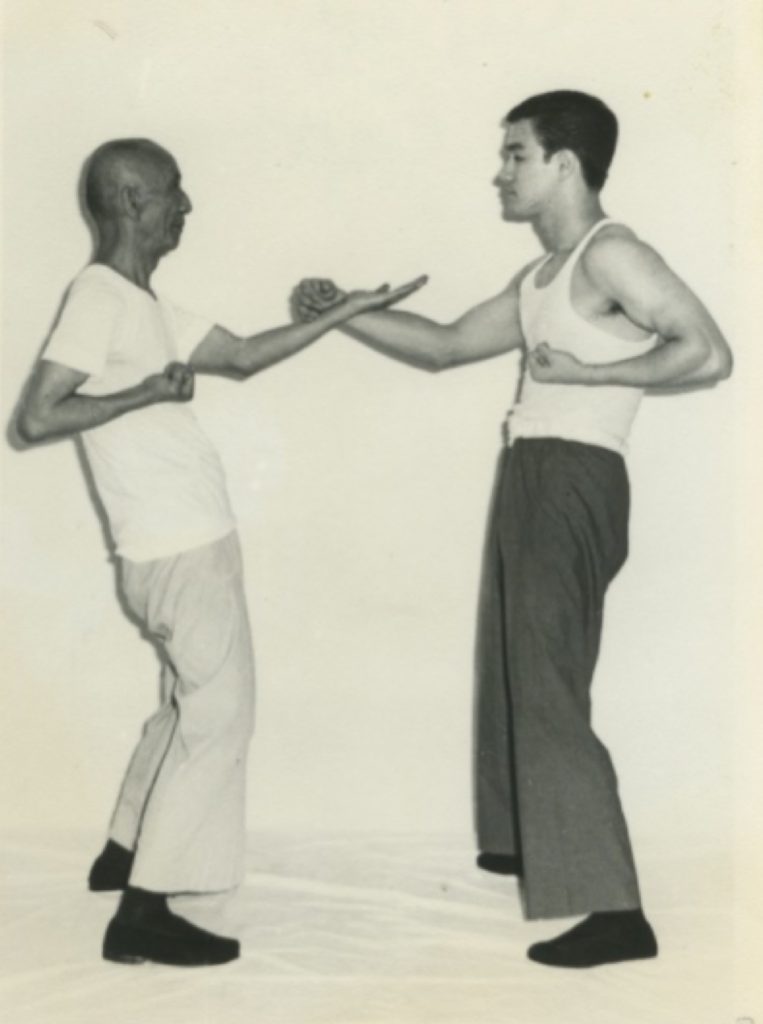
The principles of Wing Chun became integral to his approach, inspiring him to create his unique martial arts style, Jeet Kune Do.
Bruce’s meeting with Ip Man proved instrumental in propelling him to become one of the most influential martial artists and cultural icons of all time.
During Bruce Lee’s early days learning Wing Chun from Ip Man, he forged a strong friendship with William Cheung, another student of the grandmaster. Cheung played a significant role in Bruce’s training, introducing him to authentic footwork and applications not commonly taught. Their friendship and training experiences further contributed to Bruce Lee’s development as a martial artist and had a lasting impact on his legacy
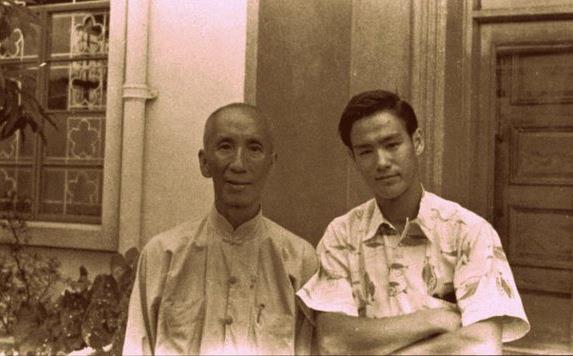
Why Did Ip Man Teach Bruce Lee?
Ip Man’s decision to teach Bruce Lee was driven by several factors. When Bruce’s father, Lee Hoi-chuen, sought out Ip Man to train his 13-year-old son in martial arts, the grandmaster recognized Bruce’s potential and enthusiasm for the craft. Despite Bruce’s reputation as a street fighter, Ip Man saw the need to provide him with proper martial arts training and instill discipline. He believed in the transformative power of martial arts as a path to personal growth and character development, making him eager to guide Bruce on this journey. Ip Man’s willingness to teach Bruce Lee also stemmed from his desire to pass down his knowledge and expertise to the Ip Man’s willingness to teach Bruce Lee also stemmed from his desire to pass down his knowledge and expertise to the next generation of martial artists.
By taking Bruce under his wing, Ip Man saw an opportunity to shape the future of martial arts by nurturing a young talent. He treated Bruce like any other student, focusing on teaching him the fundamental principles of Wing Chun, the martial art he had dedicated his life to perfecting.
Moreover, Ip Man was drawn to Bruce Lee’s genuine passion for martial arts and his evident dedication to improving his skills. Bruce’s commitment resonated with Ip Man, who valued diligence and determination as essential traits in a martial artist. Teaching Bruce became a chance for Ip Man to leave a lasting impact on the world of martial arts through the potential of this talented and disciplined student. Little did he know that this decision would play a significant role in shaping the course of martial arts history and contribute to the rise of one of the most influential figures in combat sports and popular culture.
